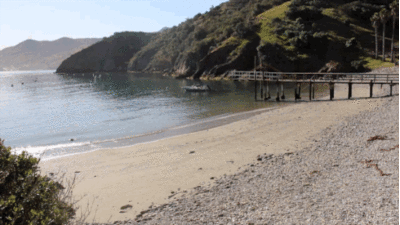
Ocean tides are created by combining the gravitational pull of the moon and the sun, combined with the rotation of the earth. The moon’s gravitational pull is stronger than the suns, which makes it the most important factor in creating tides. The sun’s gravitational force on the earth is only 46 percent that of the moon. If the Earth were a perfect sphere without large continents, all areas on the planet would experience two similar high and low tides every day. The large continents on the planet block the westward passage of the tidal swells as the Earth rotates. This causes different patterns and cycles such as semidiurnal and mixed semidiurnal tidal cycles.
The west coast of North America experiences a mixed semidiurnal tide in which there are two high and two low tides daily and the heights differ between each two high tides and two low tides. Semidiurnal tidal cycles have two high and two low tides but are approximately the same size in height. Many areas on the east coast of North America experience this tidal cycle.


Neap tides are when the Moon is at 90 degree angles with the Earth and the Sun, the Sun and Moon interfere with each other in producing tidal bulges and tides are generally weaker. Spring tides are when Moon and the Sun are in parallel with the Earth such as during a new moon or full moon and creating a much greater gravitational force. This type of tide does not only occur every spring but rather called a spring tide because its springs further than a neap tide.
Local weather systems can influence a tidal cycle as well with local wind that can move water away from coastlines, amplifying low tides. The shape of bays and estuaries can magnify the intensity of tides. The Bay of Fundy in Novoa Scotia has the largest tidal difference of about 45 feet assisted by the funnel shaped bay that can alter the tidal magnitude.


